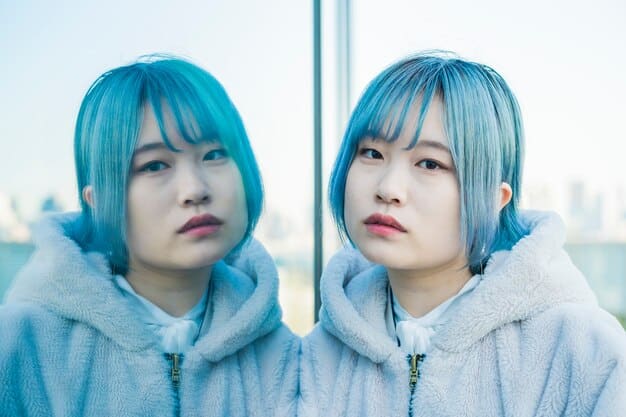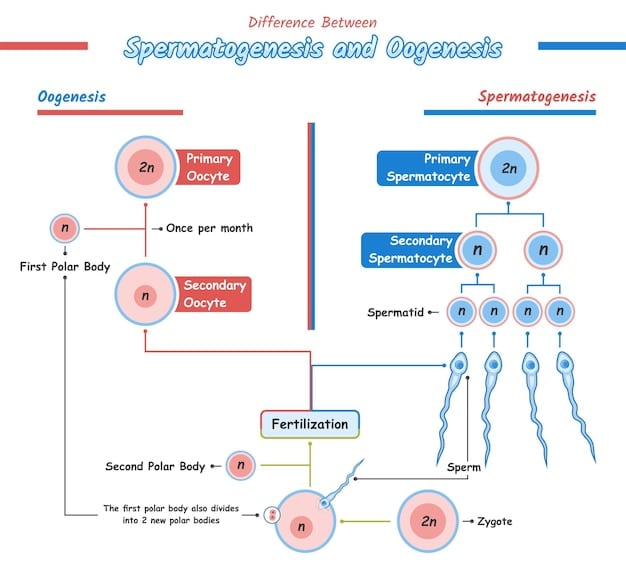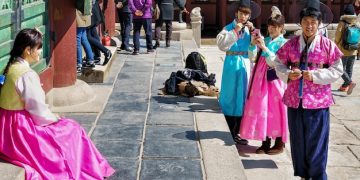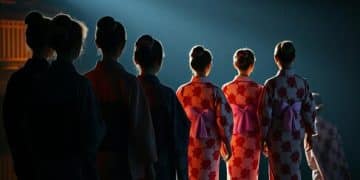Decoding Korean Honorifics: A 2025 Guide for Americans

Decoding Korean honorifics in 2025 requires understanding a complex system of speech levels and titles reflecting social hierarchy, which is crucial for Americans seeking respectful and effective communication in Korean culture, especially influenced by K-dramas.
Navigating the intricate world of Korean honorifics can feel like deciphering a secret code, especially for Americans. But fear not! This guide will equip you with the essential knowledge to confidently and respectfully engage in Korean interactions in 2025, influenced by the growing popularity of K-dramas and Korean culture in the US.
Understanding Korean Honorifics: A 2025 Perspective
Korean honorifics, a cornerstone of Korean communication, are deeply rooted in Confucian principles and emphasize respect for age, social status, and relationship intimacy. These linguistic markers dictate how individuals address each other, significantly influencing the tone and formality of conversations.
For Americans in 2025, becoming familiar with these honorifics is crucial not only for meaningful interactions, but also vital to understanding the nuances of K-dramas, which have become a global phenomenon.

The Importance of Context
The appropriate use of honorifics depends heavily on context. Factors such as the age difference between speakers, their social standing, the setting (formal or informal), and the closeness of their relationship all play a role.
Misusing or neglecting honorifics can lead to misunderstandings or even be perceived as disrespectful. Therefore, a nuanced understanding of these contextual cues is vital for effective communication.
- Age: Older individuals generally receive more formal honorifics.
- Social Status: Those in positions of authority (e.g., bosses, teachers) are typically addressed with high levels of respect.
- Relationship Intimacy: Close friends and family members use more informal language.
- Setting: Formal settings (e.g., business meetings, presentations) require a more formal tone.
Korean honorifics aren’t just about linguistic politeness; they also reflect a profound cultural emphasis on hierarchy and social harmony. By understanding that context is key, Americans can integrate within the Korean-influenced sectors of the US more smoothly.
Key Honorific Titles & Terms for Americans
Korean honorifics can be categorized into various titles and terms that are used to address people based on their social standing, profession, or relationship to the speaker.
Understanding these terms is especially useful for Americans who may find themselves interacting with Korean speakers in professional, academic, or social settings.
Common Suffixes: -ssi, -nim, -gun, and -yah
These suffixes are added to names or titles to indicate varying degrees of respect. Knowing when to use each suffix shows a higher understanding of the Korean language and social constructs.
- -ssi (씨): The most common honorific suffix, similar to “Mr.,” “Ms.,” or “Mrs.” in English. It’s generally used between equals or when addressing someone you don’t know well.
- -nim (님): A higher level of respect, often used for customers (go-gaek-nim), superiors, or professionals (e.g., teacher: seon-saeng-nim).
- -gun (군): Used to address younger males in a formal setting.
- -yah (야): Opposite of above suffixes, is used to address younger to same age people in an informal setting.
Mastering the subtle differences between these suffixes is an important step in using Korean honorifics correctly. This practice will aid Americans in showing the appropriate measure of deference in different social contexts in 2025.
Professional Titles: Seonsaengnim, Gyesanim, and more
In South Korea’s hierarchical society, professional titles carry significant weight. Addressing someone by their proper title is an expression of respect and acknowledgement of their position and expertise.
These titles are especially important in professional settings. They create a more formal and respectful communication environment. This is critical for anyone working in a setting with Korean or Korean-speaking individuals.
Navigating Speech Levels: Formal vs. Informal
Korean employs different speech levels or styles, each conveying a specific degree of formality and politeness. Choosing the appropriate speech level reveals a level of empathy and is a reflection of the relationship between the speaker and listener.
For Americans, understanding these speech levels provides a window into the cultural values and social dynamics that shape Korean communication. Additionally, K-dramas often use these speech levels to signify key communication and story-telling elements.

The Hasipsio Style: The Pinnacle of Formality
The Hasipsio style is the most formal speech level in Korean. It’s typically reserved for very formal occasions, such as business presentations, addressing elders, or speaking on TV.
Using this style correctly requires careful attention to grammar and vocabulary, as it employs specific verb endings and honorifics.
- Reserved for formal occasions (business meetings, public speaking).
- Shows the highest degree of respect.
- Uses specific verb endings (e.g., -seumnida, -imnida).
Although it might seem daunting to learn, mastering the Hasipsio style can significantly enhance your credibility and demonstrate your commitment to showing respect in Korean contexts.
The Haeyo Style: Semi-Formal Communication
The Haeyo style is a semi-formal speech level that is versatile and suitable for many situations. It is widely used between adults who know each other but are not particularly close.
The Haeyo style is considered polite and respectful. It is perfect for communication with strangers, acquaintances, and colleagues.
- Suitable for many situations (conversations with acquaintances, colleagues).
- Polite and respectful without being overly formal.
- Uses verb endings such as -ayo and -eoyo.
For Americans learning Korean, getting comfortable with the Haeyo style is an excellent starting point, as it strikes a balance between formality and approachability.
The Hae Style: Informal and Intimate
The Hae style is an informal speech level used between close friends, family members, and people of similar age and social status.
Using this style with someone you’re not close to can be considered rude or disrespectful. It shows a level of intimacy to someone where that closeness may not exist.
When used appropriately, it signals a close, comfortable relationship.
Common Pitfalls for Americans and How to Avoid Them
Americans learning Korean often encounter certain challenges when it comes to grasping the subtleties and nuances of honorifics. Cultural differences in communication styles, expectations of formality, and the perception of age and status can all lead to common mistakes.
Understanding these pitfalls and learning how to avoid them is crucial for Americans seeking to communicate effectively and respectfully in Korean contexts. Even small missteps will be seen as insensitive to Koreans because of how deeply respect is ingrained in the language.
Over-Formality or Under-Formality
Striving for the right level of formality is key. Overdoing it can sound stiff or unnatural, while being too casual can be seen as disrespectful.
Being mindful of age, status, and context will help you strike a balance between politeness and approachability.
- Assess the situation carefully (age, status, relationship).
- Observe how native speakers interact with each other.
- When in doubt, err on the side of caution and use a more formal style.
With practice and careful observation, Americans can learn to navigate this tricky balance with grace and confidence.
Tips for Learning and Practicing
Learning Korean honorifics is an ongoing process–not something that is simply memorized. Use these tips to help learn Korean and the various honorifics in any situation.
Here are some practical tips to help Americans learn and practice Korean honorifics effectively:
- Immersion: Watch Korean dramas, movies, and variety shows to observe how native speakers use honorifics in different settings.
- Language Partners: Find a Korean language partner for regular conversations and feedback.
- Role-Playing: Practice different scenarios with friends or tutors to build confidence in using honorifics.
By immersing yourself in the language and culture, actively practicing with native speakers, and seeking constructive feedback, you can steadily improve your understanding and use of Korean honorifics.
The Future of Korean Honorifics in a Globalized World
As globalization continues to reshape societies and cultures, language is also evolving, with influences from different parts of the world. Korean is no different.
As Korean culture continues to spread into the US, it is more important than ever for Americans to learn about cultural concepts like honorifics.
The Influence of K-Dramas and Pop Culture
The global popularity of K-dramas and K-pop has raised awareness of Korean culture and society. This has also caused a greater understanding of Korean honorifics among international audiences.
These soft social signals will continue to educate the western world about Korean language and society, even if they never plan to visit or work in the country.
- Increased exposure to Korean culture through media.
- Greater awareness of honorifics among international audiences.
- Potential for new, hybrid forms of politeness to emerge.
By embracing a mindset of continuous learning and cultural sensitivity, Americans can navigate the evolving landscape of Korean honorifics with flexibility and respect.
| Key Concept | Brief Description |
|---|---|
| 🤝 Honorifics | System of showing respect in Korean language. |
| 🗣️ Speech Levels | Varying degrees of formality in speech. |
| 🧑💼 Titles | Professional or social indicators of respect. |
| 🌐 Globalization | Evolving usage of honorifics with outside influence. |
Frequently Asked Questions
▼
Learning Korean honorifics is crucial for showing respect and understanding social dynamics in Korean culture. Using them correctly demonstrates your cultural sensitivity and helps you build stronger relationships.
▼
‘-ssi’ is a common honorific suffix used between equals or when addressing someone you don’t know well, similar to “Mr.,” “Ms.,” or “Mrs.” Avoid using it with someone of a higher status.
▼
Yes, Korean has distinct speech levels that convey different degrees of formality and politeness. These range from very formal (Hasipsio) to informal (Hae), each used in specific contexts.
▼
Age is a significant factor in using honorifics. Generally, older individuals are addressed with higher levels of respect. It’s important to show deference to those older than you.
▼
Yes, K-dramas can be a helpful resource for observing how native speakers use honorifics in various settings. Pay attention to the relationships between characters and the language they use.
Conclusion
By familiarizing yourself with the diverse perspectives on Korean honorifics, you’re setting the foundation for more respectful and effective communication. Remember to stay attentive to contextual signals, respect hierarchy, and evolve your approach. Understanding the cultural sensitivity of Korean honorifics is key for any US citizen.





